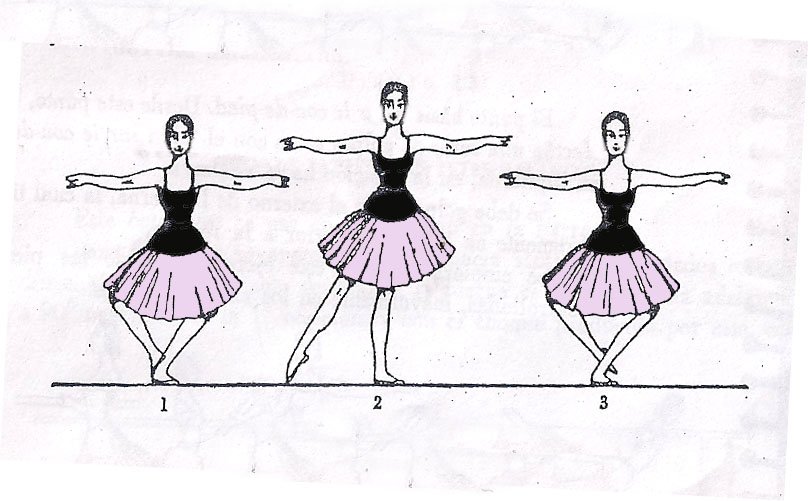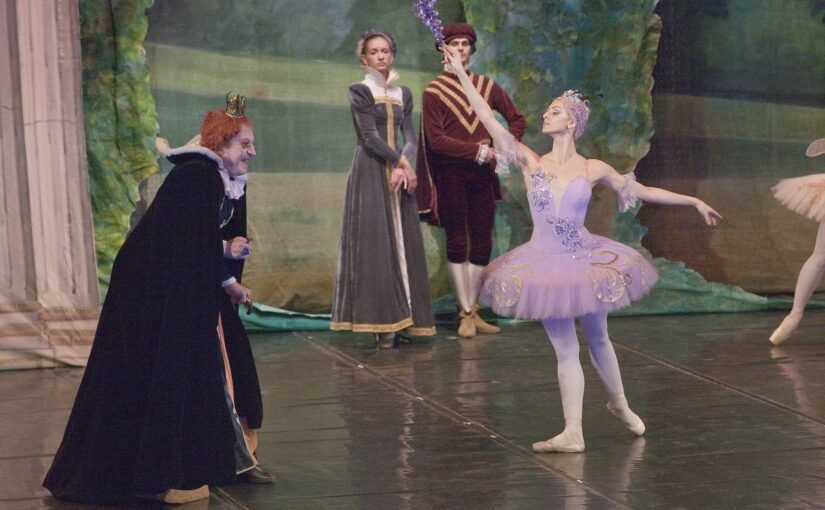Fondu is one of the most common exercises in ballet class, especially at the bar. Fondu means “to melt”. So, in the first part of this exercise, think of the sensation of “melting”, and Fondu is one of the most common exercises in ballet class, especially at the bar. Fondu means “to melt”. So, in the first part of this exercise, think of the sensation of “melting”, and execute fondu with a soft and continuous movement. On the other hand, in the second part of this movement, your leg rises with dynamic energy.On the other hand, in the second part of this movement, your leg rises with dynamic energy.

Table of Contents
How to do the Fondu
To do this exercise, bend your supporting leg slowly in fondu and point your working leg on the ankle. As you straighten your supporting leg, unfold your working leg and extend it to the point on the floor or in the air. You can do this movement devant, derriere and a la second. In the fondu forward, you use the cou de pied devant. In the fondu back, the basic position is the cou de pied derriere.
Remember that fondue means melting. So, every time you do this movement, think of every bit of your body “squeezing”. To execute this exercise properly, you need to “melt” your two legs. To get this, bend them at the same time.
Shift the weight on one leg, lift the other and place it next to the little ankle bone. So, the big toe is trying to touch the ankle bone, and the heel is pushing forward. Don’t let your heel drop backwards. Then, separate the two legs and extend them at the same time, pointing the toe to the floor or on l’air.

Below I explain how to perform the different variants of this exercise.
Battement fondu simple (a térre)
- Stand in the fifth position, right foot front and move your right foot to the cou de pied devant. At the same time, do a demi plié with your left leg.
- Next, open your right leg forward to the fourth position front, pointing your toe on the ground as you straighten your left leg.
- Finally, return your right foot to the cou de pied. Repeat the exercise to the second position and the fourth position back. Place your foot at the cou de pied derriere in the latter case. You don’t have to raise your knee or lift your leg in this movement.
Battement fondu developpé (en l’air)
You do it in the same manner as battement fondu. As you straighten your supporting leg, you do a developpé at either 45 or 90 degrees with your working leg. If you are doing this movement at 45 degrees, your working leg opens from the cou de pied. If the developpé is at 90 degrees, slide your working leg from the cou de pied to retiré. Then, open your leg forward as your supporting leg straightens. Finally, keep your working leg in the extended position for a moment before slowly returning to the cou de pied as your supporting leg does a demi plié.
Battement fondu developpe relevé
Do this movement in the same way as battement fondu developpé. As straighten your supporting leg, raise it to the demi-pointe and execute a developpé at 45 or 90 degrees.
Where is the weight placement in the fondu?
In the fondu exercise, you must bend the knee on one leg. This requires a placement shift. The question is where is the weight going to be? The weight is going to be on the ball of the supporting leg. So if you don’t make the necessary shift enough onto the supporting leg, you will fall. So, you need to use your working foot to help shift the weight onto the supporting leg. Use your toes to help to shift the weight.
KEY INFO
Your entire weight should be on the ball of the supporting leg. This is key because it is from there you can create an up-and-down movement.
If your weight is not entirely on the ball of the foot, or the weight is even a little bit left on the heel, when you push up, there’s no way you could balance on your leg.
Tips to do fondu perfectly
- It is very important to keep the en dehors. For example, when doing the backward movement, make sure that the knee does not drop and the upper part of the leg remains well. The plie in the battement fondu is more about turning than going down. When you try really hard to turn your hips outward and have your knees face back in proper en dehors, the lowering process (knee flexion) happens naturally. So focus on en dehors, not on artificially bending your knees.
- Make sure the sur le cou-de-pied is correct. Battement fondu is based on the position sur le cou-de-pied. This term means something like “in the neck of your foot.” So, the ball of the working foot (actually the toenail of the working toe) should be on top of the inner ankle bone.
- Push yourself up with your spine. You should do this in all exercises that contain plié. In other words, the top of the head should “aim for the sky” while the heels remain firmly on the ground. So when you do battement fondu, your body tries to reach in two opposite directions: the bottom, towards the floor, the top, towards the ceiling.
- Don’t lift the hip of your working leg. Whichever direction the legs go, the hips should remain still. Try to control your hips as much as you can, so that your body gets used to the fact that your hips should remain as straight as possible.





Leave a Reply